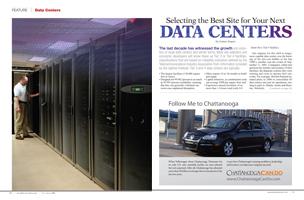
The last decade has witnessed the growth and evolution of large data centers and server farms. Most site selectors and economic developers will know these as Tier 3 or Tier 4 facilities, classifications that are based on reliability indicators defined by the Telecommunications Industry Association from information provided by the Uptime Institute. Tier 3 and 4 data centers are typically:
The largest facilities (150,000 square feet or more);
Designed for 99.982 percent to as much as 99.995 percent availability, meaning that they can generally withstand one worst-case unplanned disruption;
Often require 18 to 24 months to build and equip;
Capital intensive, as construction costs can average $500 per square foot; and
Experience annual downtime of no more than 1.6 hours total (only 0.4 hours for a Tier 4 facility).
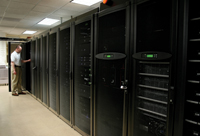 One impetus for this shift to larger, more capable data centers was the bursting of the dot.com bubble in the late 1990’s, another was the events of September 11, 2001. Companies called into question the number and location of their facilities, the disparate systems they were running and costs to operate their networks. For example, Hewlett Packard initiated plans in 2006 to consolidate 85 data centers into just six operations, running in pairs in Atlanta, Austin and Houston. Similarly, more than one-half of Intel’s data centers were at least 10 years old when the company made the decision to consolidate over 130 individual centers into just eight strategic hubs in Asia, Europe and the Americas. Another motivation was the need for additional capacity and bandwidth, driven by the explosive growth of the internet search industry and social networks such as MySpace and Facebook. In very high profile instances Google, Microsoft and Yahoo have added large data centers in geographically dispersed regions such as Quincy, Washington, Austin, Texas, and Lenoir, North Carolina, to take advantage of available and affordable land and power.
One impetus for this shift to larger, more capable data centers was the bursting of the dot.com bubble in the late 1990’s, another was the events of September 11, 2001. Companies called into question the number and location of their facilities, the disparate systems they were running and costs to operate their networks. For example, Hewlett Packard initiated plans in 2006 to consolidate 85 data centers into just six operations, running in pairs in Atlanta, Austin and Houston. Similarly, more than one-half of Intel’s data centers were at least 10 years old when the company made the decision to consolidate over 130 individual centers into just eight strategic hubs in Asia, Europe and the Americas. Another motivation was the need for additional capacity and bandwidth, driven by the explosive growth of the internet search industry and social networks such as MySpace and Facebook. In very high profile instances Google, Microsoft and Yahoo have added large data centers in geographically dispersed regions such as Quincy, Washington, Austin, Texas, and Lenoir, North Carolina, to take advantage of available and affordable land and power.
The holy grail of data center location typically includes:
Access to fiber;
Energy availability and pricing; and
Disaster avoidance
However, many other variables play significant roles in the siting of these so-called “factories of the future,” most notably the availability of water and labor, building and/or site configuration, power reliability and redundancy, and “green” opportunities. On the following pages we will review the most current criteria used to evaluate new data center locations.
Telecommunications
The availability of both lit and dark fiber optic broadband service, ideally from multiple carriers, is of paramount importance. The use of fiber, particularly dark fiber, is growing rapidly as data center operators address security, scalability and cost concerns. The best site will:
1. Be closest to a fast backbone network;
2. Provide connectivity to multiple ISPs;
3. Allow for dual feeds to separate central offices from separate points in the building; and
4. Have access to microwave and satellite back-up capability.
It is possible to purchase asset maps for fiber routes in the U.S. However, these maps would comprise only the initial thrust for gauging 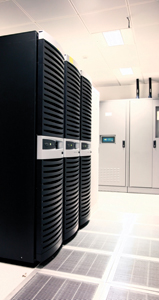 telecommunications availability and capacity. The only way to truly understand the condition of the telecommunications infrastructure is to engage with local telcos. However, many carriers consider information about their networks to be highly sensitive, so plan on asking the local economic development organizations or utilities to intercede on your behalf.
telecommunications availability and capacity. The only way to truly understand the condition of the telecommunications infrastructure is to engage with local telcos. However, many carriers consider information about their networks to be highly sensitive, so plan on asking the local economic development organizations or utilities to intercede on your behalf.
Power Availability and Reliability
Data centers now consume more energy annually than Sweden. According to the Lawrence Berkeley National Laboratory, from 2000 to 2005 the aggregate use of electricity by data centers has more than doubled. The sites with the best power infrastructure will be those that exhibit:
1. Substation capacity of at least 7 MW immediately available, expandable to 30 MW or more within acceptable timeframes;
2. Redundant feeds from separate substations, or a second grid (more highly prized);
3. Reliability, using the standard IEEE reliability indices (CAIDI, SAIFI, SAIDI) to track and benchmark performance at the area, operating district or crew center levels, if possible; and
4. Adequate access to natural gas.
Natural Disaster Risk
Because almost every site will exhibit vulnerability to one threat or another, the objective is to select a location that mitigates the most risk while presenting an acceptable cost burden. Sites that are vulnerable to the following threats are typically downgraded:
1. Seismic events: At-risk areas include much of the Pacific Coast and the Midwest south of St. Louis (the New Madrid fault).
2. Tornados: Active areas include much of the Midwest.
3. Volcanoes: Measureable volcanic threat is typically confined to the Pacific Northwest.
4. Hurricanes: The most vulnerable regions are the Gulf Coast and South Atlantic.
5. Flooding: A highly localized threat that is not confined to the major river valleys.
6. Fire: Also highly localized.
Man-Made Disaster Risk
This threat has its origins in domestic and international terrorism, and more common disasters associated with planes, trains, trucks and automobiles. Major cities are often thought to be at most risk, but many potential targets/areas of vulnerability are located well away from dense population centers. The most suitable data center sites will be those that are furthest from incompatible land uses such as:
1. Power plants
2. Dams
3. Chemical and other industrial process plants
4. Airports
5. Railroads
6. Highways, interchanges and hazardous cargo routes
7. Telecommunications signal facilities and other sources of electromagnetic interference
8. Potential terrorist targets, including, but not limited to
a. Nuclear power plants
b. Military installations
c. Bridges, etc.
Water and Wastewater
Water remains the most efficient method of cooling a vast data center. The highest scoring sites will have access to a plentiful supply of domestically potable water via an appropriately-sized line. If wells are to be the source of water, be sure the sellers are able to demonstrate that there is sufficient capacity and quality available.
Cooling water is typically treated with chemicals to help manage corrosion. The best sites will be served by wastewater plants that are able to accept the data center’s discharge without pre-treatment. Additionally, large data centers typically require dual water feeds.
Costs
Power can account for as much as 80 percent of the operating cost profile of a data center. With power consumption growing an average of 14 percent per year among larger facilities, power costs have increasingly become a key location determinant for mission-critical facilities. The best-rated sites will present the lowest overall cost profile including:
1. Capital costs for:
a. Land/building purchase;
b. Site work; and
c. Building construction
2. Ongoing operating costs for:
a. Power
b. Occupancy
c. Labor
d. Taxes
Building/Site Considerations
For a building or site to be capable of accommodating the requirements of an enterprise data center it must conform to “industry” standards as well as local land use ordinances. Industry standards are relatively straightforward to apply. The best sites will:
1. Be configured for maximum, efficient use of the land (typically a site with the most right angles);
2. Have sufficient size to accommodate building footprint, including space for
a. Outside water storage (48 hour supply);
b. Infrastructure outside the building (where building codes restrict height and use of rooftop for equipment); and
c. Parking
3. Offer opportunities for expansion;
4. Have topographic features that lend themselves to easy site balancing;
5. Feature soil types with adequate load bearing capacity;
6. Are minimally impacted by streams and floodplain;
7. Are free of contamination;
8. Contain few, if any historic resources;
9. Provide adequate, safe access (including public transportation);
10. Minimize building profile and visibility; and
11. Allow for perimeter security and controlled access.
The impact of local zoning and subdivision ordinances is more difficult to assess because few were written with today’s large data centers in mind. The best sites will be zoned for a large data center, meaning that it will not be necessary to go through a legislative process to allow the use, or to accommodate the bulk and height of the building. Less favorable sites will not have the proper zoning in place. Thus forcing the applicant into the variance or waiver process, this can cost time and money and injects an element of uncertainty into the process.
For example:
The definition of a data center will be deficient; and/or
The Floor Area Ratio (FAR) will be insufficient; and/or
Height limitations will not allow for cooling towers; and/or
Parking requirements maybe grossly overstated.
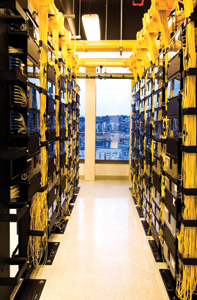 Labor Market Considerations
Labor Market Considerations
Labor is not always perceived as a critical success factor during the siting of data centers or mission-critical facilities. However, the presence, or absence, of key operator, technician and professional skills can hamper a center’s effectiveness or worse, expose the center to unnecessary risks and costs. Factors that should be evaluated include:
1. The prevalence of data center occupations in the local workforce (e.g., programmers, software engineers, support specialists, database administrators, network administrators);
2. The number of persons working in industries that tend to be data center intensive (e.g., financial services);
3. Opportunities to establish partnerships with area educators, particularly universities and community colleges (e.g., the presence of computer science programs as well as IT departments and facility management courses);
4. Relatively low levels of union influence; and
5. Market average wages for IT occupations.
Renewable Energy Opportunities
The availability of renewable sources of energy is becoming an increasingly important consideration in the siting of data centers. For example, abundant, low cost hydroelectric power drew Microsoft, Yahoo, Intuit and Google to Quincy, WA. Google also selected Council Bluffs because of hydroelectric power from the Missouri River and the production of other renewable fuels such as ethanol and wind power in western Iowa. Those planning to operate a green data center will assign higher priority to sites offering:
1. Access to grey/recycled water for cooling purposes;
2. Temperature gradients that permit “free cooling,” by air, which can reduce reliance on chillers (often the most energy-hungry piece of a data center);
3. Hydroelectric power; or
4. Opportunities for biomass cogeneration.
Incentives
Economic development incentives are pricing tools that reduce the costs or financial risks associated with data center investment. Incentives can reduce the potential project investment costs, and/or overhead, thereby potentially increasing ROI and shortening the payback period. The influence of incentives looms larger once the data center location options are distilled to a “short list” of candidate markets. Also, incentives are often viewed by data center operators as a measure of the level of interest and support they can expect should they elect to become a part of the local community. Those sites rated highest for incentives will benefit from state and local programs that:
1. Provide the greatest value from incentives calibrated to the value of the proposed investment (e.g., investment tax credits, property tax abatements, sales tax exemptions);
2. Reward relatively limited job creation with job credits and training grants;
3. Are useable or monetizable (e.g., tax credits that can be sold, traded or transferred to a related entity); and
4. Provide “self-regulating” benefits in the event of a shortfall - incentive benefits would be reduced proportionately, or eliminated, during those periods when the recipient is unable to meet its commitments.
A Last Word…
One size rarely fits all. The perfect data center destination is as elusive as the fountain of youth and probably just as expensive. But that’s 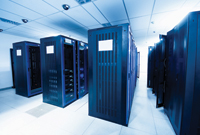 not to say that all the good sites have been taken. To be successful, make certain to organize your search around the unique requirements of your particular project. That means setting your priorities and identifying those threshold factors that could determine the success or failure of your efforts. Also, there is much good information out there to support your efforts. Many economic development organizations have made data centers a strategic target and are loading their websites with current data on sites, infrastructure, labor and costs. We also recommend a wide-angled search for other resources. For example the Data Center Knowledge website (www.datacenterknowledge.com) features industry, technology and location profiles and links to helpful white papers; and the Federal Emergency Management Agency (FEMA) website provides up-to-date information on disaster and emergency activity.
not to say that all the good sites have been taken. To be successful, make certain to organize your search around the unique requirements of your particular project. That means setting your priorities and identifying those threshold factors that could determine the success or failure of your efforts. Also, there is much good information out there to support your efforts. Many economic development organizations have made data centers a strategic target and are loading their websites with current data on sites, infrastructure, labor and costs. We also recommend a wide-angled search for other resources. For example the Data Center Knowledge website (www.datacenterknowledge.com) features industry, technology and location profiles and links to helpful white papers; and the Federal Emergency Management Agency (FEMA) website provides up-to-date information on disaster and emergency activity.

